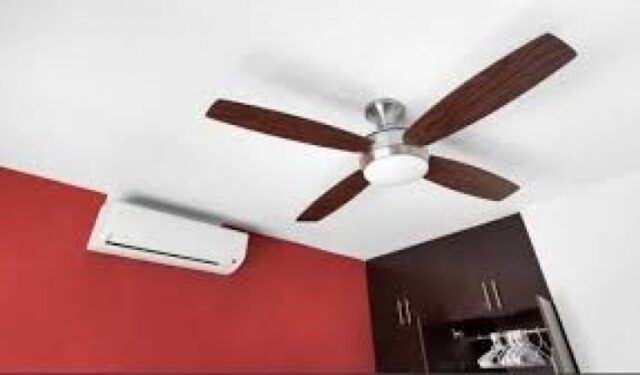Beating the summer heat doesn’t have to be a battle between comfort and cost. While air conditioners (ACs) are trusty warriors against scorching temperatures, they can be more effective when paired with a strategic teammate: the humble fan. This dynamic duo works together to create a cool and comfortable home environment, all while saving you money on your energy bills.
Understanding the Cooling Power of AC Units
Before we delve into the tag-team tactics, let’s explore how ACs work their magic. AC units function by extracting heat from your indoor air and transferring it outside. This cooling feat is achieved through a cycle involving refrigerant, a special coolant. As the refrigerant circulates through the AC system, it undergoes phase changes, transforming from a liquid to a gas and back again. During this process, heat is absorbed from the indoor air, causing the refrigerant to evaporate. This heat is then expelled outdoors as the refrigerant condenses back into a liquid state. This cycle continues, maintaining a comfortable temperature inside your home.
Related Post: Top Camera Phones Under Rs. 25,000 in India (May-June 2024)
Enhancing Cooling with Strategic Fan Placement
While ACs excel at lowering temperatures, cool air distribution can sometimes be uneven. This is where fans step in as the perfect complement. By strategically placing fans near AC vents or areas with poor air circulation, you can ensure cool air reaches every corner of the room. Fans create airflow, effectively circulating the cooled air generated by the AC unit. Additionally, fans create a gentle breeze that enhances the perception of coolness, making you feel more comfortable even at slightly higher thermostat settings.
Benefits of the AC-Fan Power Couple
-
Rapid Cooling Response: The combined force of AC and fan creates a faster cooling effect. Fans expedite the distribution of cool air, allowing you to enjoy a comfortable environment quicker, especially when entering a hot room or after initially turning on the AC.
-
Improved Air Circulation: Fans prevent stagnant air pockets and promote even air distribution throughout the room. This not only enhances comfort but also reduces humidity levels, particularly beneficial in muggy climates.
-
Energy Efficiency: Fans are significantly more energy-efficient than ACs. By using fans to supplement AC cooling, you can reduce reliance on the AC alone, leading to substantial energy cost savings, especially during peak summer months.
-
Cost-Effectiveness: Fans are a budget-friendly way to boost comfort. Their low purchase and maintenance costs make them a wise investment alongside your AC unit.
The Science Behind the Speed
The rapid cooling achieved by this duo is rooted in scientific principles. ACs remove heat, but it takes time for the entire room to reach the desired temperature. Fans accelerate this process by dispersing cool air more efficiently. This reduces the time it takes for the entire space to feel comfortable.
Optimizing Your Cooling Team
To maximize the effectiveness of your AC-fan combo, consider these tips:
- AC Unit Placement: Position your AC unit centrally for optimal cooling throughout the room. Consider factors like windows, doors, and heat sources.
- Proper AC Sizing: An appropriately sized AC unit is crucial. An undersized unit will struggle to cool the space, while an oversized unit might cycle on and off frequently, wasting energy.
- Fan Positioning: Place fans strategically near AC vents or areas with poor air circulation for optimal cool air distribution.
By implementing these strategies, you can transform your AC and fan into a powerful cooling team, ensuring a comfortable and cost-effective summer for you and your family.





